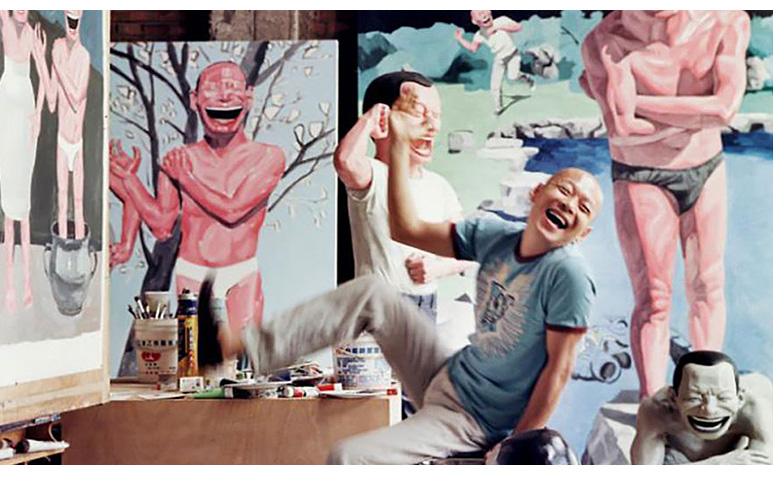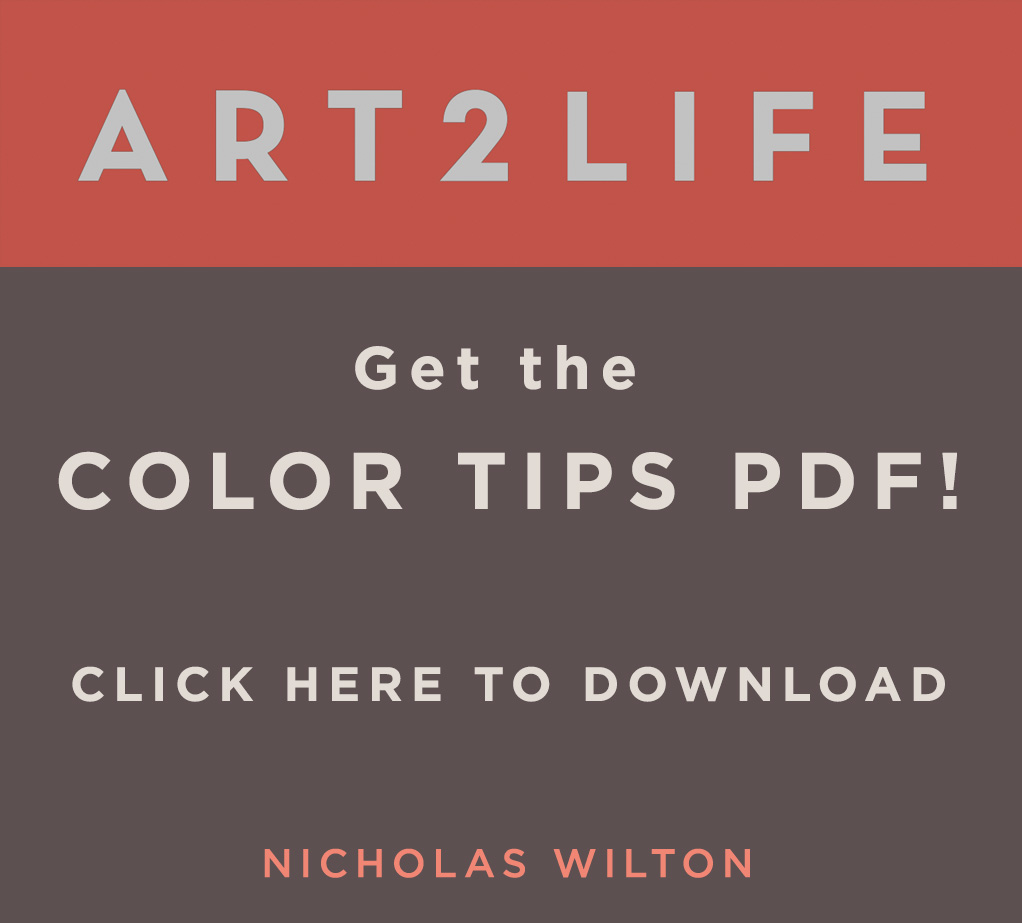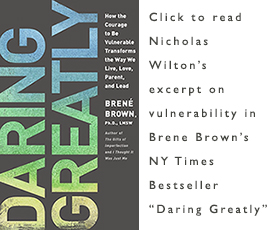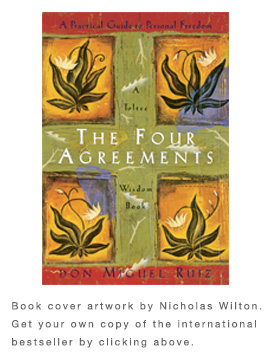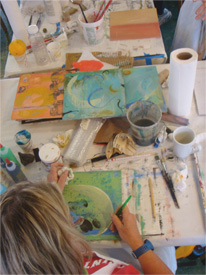The Bully In The Room
When finishing a painting, I find that small, simple adjustments are all that’s needed. This was the case with a painting I’ve been working on lately – it was almost done, but something about the composition irked me. Then I made a simple change and suddenly everything came together.
Click on the image to watch the video and see what I did.
In gratitude, Nicholas
15 Positive Ideas that can Help Your Art Practice
There are many challenges the artist must face to pull off a consistent art practice. But today I don’t want to talk about those. Besides, they pale in comparison to these positive ideas and truths regarding art making that I have come to embrace and believe. When I am not making my art, I am busy teaching these principles in workshops, mentorships, blogging and other programs. I have found that these points – when even slightly embraced – can dramatically shift, not just your outlook, but also your art and then ultimately your life.
It has been my experience, I am happy to report, that these are true. Today I would like to focus on the first eight…
8 Positive Points on Art Making
1 Intention actually changes what comes across your path. Saying out loud what you want helps it become so.
2 Artists can create any kind of art and build careers in any direction they choose.
3 The process of art making can become an enjoyable, creative, and financially sustaining practice.
4 All success is taught, especially in art. Artists realize this and no longer invalidate themselves or their work because they simply have not been given the information they need to achieve their goals.
5 Art does not fit in any particular category. It is by its very nature limitless and those that make it are inspired because of this fact. It excludes no one.
6 Making personal, authentic art gives the rest of the world permission to do the same.
7 People will collect your art because it makes them feel and see the world in a way they have never before. Your work transports them.
8 Sharing your art and what you know with those not as far along helps make you a better artist. There is more than enough for everyone. There is abundance for those who give.
I know for many of you these are familiar but possibly there are a couple in here that are not. If so, then hopefully you will feel just slightly more buoyant, slightly more energized as a result of discovering them.
When I read these, it reminds me of the tremendous possibilities available for not just me, but for all artists.
It is an amazing time in history to be an artist.
Do all these 8 points resonate with you? What are some of yours? I would love to improve this list with your help.
Have a great rest of the week!
In gratitude, Nicholas
Caught In the Middle
I’ve been working on a painting and for some reason it just wasn’t coming together…something was off. And then, the solution hit me!
Click on the image to watch the video, and see how I solved the issue with my painting.
In gratitude, Nicholas
Stonewalls and Art
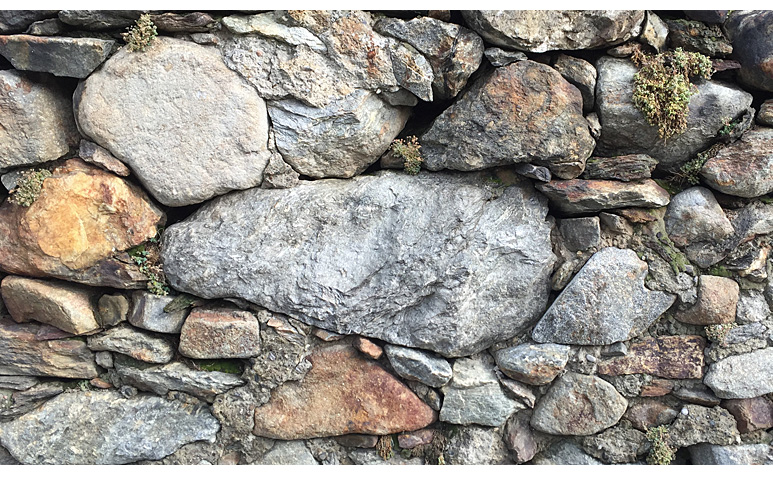 Wandering through the northern Italian town of Tirano, I am struck by the very old, stonewalls. They circumscribe every property, miles of village roadways and impossibly steep hillside terraces. They are simply beautiful. Utilitarian but incredibly artful, their refined quality I can still see. This was how hillsides, roads and olive orchards were delineated and terraced centuries ago.
Wandering through the northern Italian town of Tirano, I am struck by the very old, stonewalls. They circumscribe every property, miles of village roadways and impossibly steep hillside terraces. They are simply beautiful. Utilitarian but incredibly artful, their refined quality I can still see. This was how hillsides, roads and olive orchards were delineated and terraced centuries ago.
I imagine it took decades to complete many of these walls. But since they have existed for centuries, the investment of time and energy seems totally worth it. Whether the wall is in a forgotten corner of the city or lining a barely used road leading up the hill from the center of town, they are all made with the same degree of refinement. Stones are chosen and composed within these walls to complement one another. Large massive stones give way to patterns of smaller ones. Repetition of stone shapes and sizes are as varied and surprising as the pattern or passage of any painting I have ever done.
Walking up these steep village roads linking these tiny mountain Italian villages, the stonework accompanies me for miles. Although the maker of this wall is long forgotten I can feel his calloused but sensitive hands even now. It was only one of many moments in a single day of many but in that moment he, no doubt, held up a stone, felt its weight, considered its most smooth, most flattest side and then for time memorial, placed it just so into this wall.
These walls were not slapped together. You can tell. They are gorgeous displays of craftsmanship, care and design. I wonder if what I spend my time making, paintings composed of questionable brands of store bought oil paint, will last the test of time as well as these walls? How is what I make any different? Like those artisans that made these walls so long ago I too am just demonstrating my selectivity. I too am choosing my preferences in color, shape and line to make something.
Maybe that is just it. That is what all art is about. Whether it is a stonewall, a new recipe, an arrangement of cut flowers or even an abstract painting. It is an orientation to life. That the decisions, the choices we make, do matter especially when they result in something that stands outside of us. When we actually manifest something. It becomes part of the world. We leave it behind as a reminder of who we were and who we became.
Maybe the greatest benefit of our art is not for us. Maybe it is about what is felt and experienced by those who come across what we have made, maybe centuries later. When we too will probably be mostly forgotten. But then, in just a glance, in just a moment they too will get a sense of who we were and what, in the end, mattered to us.
Start Differently
In the beginning it really helps if that beginning is totally new for you. The stakes are low but the potential is high. It can be really exciting to begin something new. The way you start is a big reason why.
How do you start your work?
In gratitude, Nicholas
How to Love All of Your Art
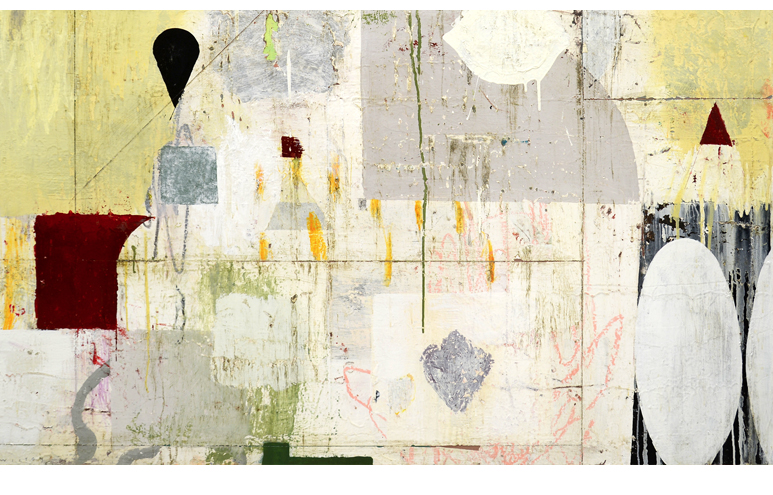 Do you ever notice when you are creating your art how often a small section of your art will look especially better than all the rest? If you could magically crop out this one part it would be possibly the best thing you have ever made? This happens to me all the time. It took me a number of years of observing this phenomenon before I began to understand why this was happening and – more importantly – how I could make the entire artwork, not just a small part of it, strong.
Do you ever notice when you are creating your art how often a small section of your art will look especially better than all the rest? If you could magically crop out this one part it would be possibly the best thing you have ever made? This happens to me all the time. It took me a number of years of observing this phenomenon before I began to understand why this was happening and – more importantly – how I could make the entire artwork, not just a small part of it, strong.
I noticed that this “small parts working thing” happened more to me in the earlier stages of my career, but it was only recently I realized why.
I wish I had understood this earlier. It would have helped my art, especially when I was just starting out. Maybe understanding how to correct this can help you now.
It actually is quite simple. In my teaching, when the art has only parts working and not the whole, I call it “Partitioning.” Many students have this happen in their work. On the one hand, it can be helpful or even reassuring when you finally make something that you absolutely love. It is so nice to be able to say definitively “yes” to something you have created. To achieve this, once in a while, can really invigorate your art practice. Who cares if it is only one small cropping in the lower right? At least we have something that we know we like.
When this keeps happening, however, it can become frustrating. We are, after all, trying to make a singular strong piece of art. Like most challenges in Art, it has to do one’s thinking – not some magical ability that some have and others don’t.
When we make our Art we tend to work on different sections, some areas we like and some we do not. If we can fix all areas then possibly we can make something we love. But it is in this preoccupation, this dogged determination to solve a problem area, correct or even worse “paint around what we love” that can cause partitioning.
Overly focusing on singular parts is at the root of the problem. Instead we need to go to those problem areas, but in changing them – actually while changing them – we must look at and consider all the other areas of the art. So in effect we are working on this close up view but simultaneously we are also considering the impact this change is having on the larger, distant view.
It is a little like a dancer being utterly spontaneous from within while dancing but also paying attention to the external expression, how they look from all the different angles while in front of an audience. Thinking of these two views and how they effect each other, looking at the big picture while you work on the small one actually changes the kind of marks, the answers you come up with to resolve the problem area in your art.
When an artist can hold both these views simultaneously, when they can expand their awareness, the work actually feels more expansive. The work becomes uncroppable. It is perfectly strong at the scale it exists. Nothing can be added or taken away to make it stronger.
Expanding our awareness, becoming more alive, more sensitive, is really at the heart of a vibrant art practice. Stopping the habit of focusing on parts instead of the whole will lessen partitioning.
In Life the more we can broaden our awareness, the more sensitive we can become, the more expansive our Art will become, and instead of just liking parts we will fall in love with the whole.
In gratitude, Nicholas
How to Get to the Next Step
It’s an issue that’s all too common with creatives: you’re working on a painting and you like what you have so far, but you don’t know what to do next.
Watch the video to see what I do when I encounter this with my work.
What do you do when you are having trouble moving forward with your work?
In gratitude, Nicholas
Get Yourself Unstuck
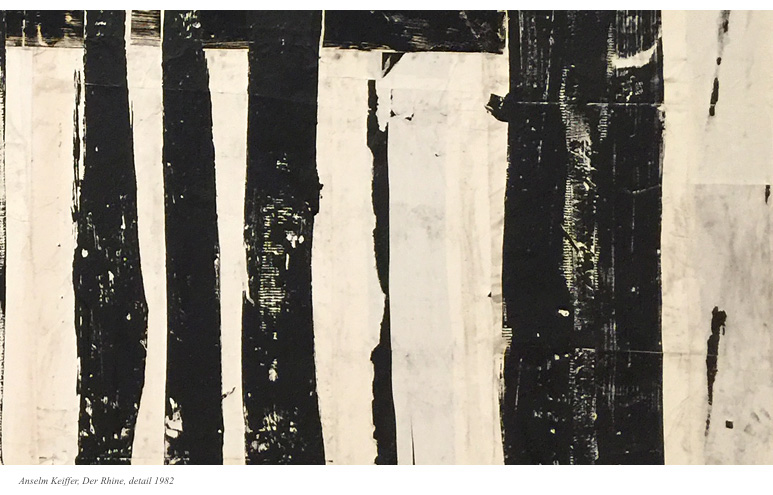
Sometimes you just get stuck. You are painting along fine and then you reach a point where you don’t know what to do. It might be because you have fallen in love and have lost objectivity. It might because the color is off somehow. But usually you stop and pullover because you just actually have no idea what to do. You truly have never been here before.
This is a good strategy in most circumstances. But in art, sometimes you think you can figure it out if you think hard enough, but in actual fact you can’t. It is hard to imagine too many steps ahead in a painting. Having no clear image to shoot for is somewhat terrifying but there it is. You have come to a place in the road that you can go no further. So logically we stop.
And then, since no new clear information is conjured up, we tend to stay stopped. Stuck.
So I don’t know the full answer, but I think I know a small part of it.
And here it is…
When you hit a roadblock, when you can’t keep moving in one direction, instead of stopping, you just go left or right. You pivot. In other words you keep moving in a way that is different even though you might not know the outcome. The important thing is to just keep moving. You might even be pretending to be moving towards something but if you can keep moving, if the dance can continue, the answer, the solution to what was stopping you arrives more quickly.
Interestingly, questions that arise in the process of making your art are often best answered from doing instead of thinking. If you can just keep mark making, faking it almost, then your art continues to change. It is this changing that actually starts to give you the crucial information about what you might do next. The changing art seems constantly new and fresh and as a result you can remain objective. And being objective allows you to see your art and what to do next, more easily.
So next time you find yourself just staring at your art not knowing what to do and minutes are turning into hours, just remember… Move. Take action even if you don’t know what to do. Do anything. Trust your intuition and simply dance.
That is a pretty good answer till a better once comes along.
And from my experience, it always does.
Do you ever get stuck? And when you do how do you get unstuck?
The Best Version of Yourself
We all experience ups and downs – it’s part of the nature of life – but I’ve found that making art during the up times is much easier to do than during the down times. I realized however, after going through a bit of a down time myself recently, that getting into the studio was exactly what I needed.
Watch the video to see how I use art to heal.
Let me know what you think – do you ever use art as therapy?
In gratitude, Nicholas
Please Steal My Art
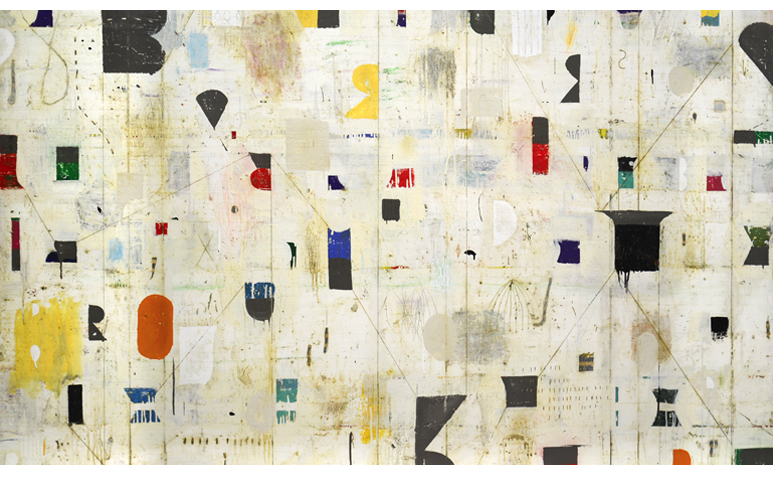 It is not clear exactly who said “Good artists copy, but great artists steal.” It might have been Picasso. The poet TS Eliot wrote something very similar in 1920. Regardless, the quote brings to the forefront an idea, a concept that I am consistently highlighting in all my Art2Life programs.
It is not clear exactly who said “Good artists copy, but great artists steal.” It might have been Picasso. The poet TS Eliot wrote something very similar in 1920. Regardless, the quote brings to the forefront an idea, a concept that I am consistently highlighting in all my Art2Life programs.
It has to do with creating your Art from looking primarily inside of yourself instead of outside of yourself. I teach a lot of workshops and I understand and appreciate the temporary influence a teacher’s work may have upon a students. While this is to be expected, I am not at all interested in having this be the final result for my students.
When someone is copying someone else’s art, it just means that they are looking outside of themselves more than they are looking within. In the beginning everyone is trying to figure out what kind of Art it is exactly they can make. Everyone is influenced. I surely was and I too copied people’s work because I so badly wanted to create work that I loved. I couldn’t see my own work at that point, as it was still unmade. It is far easier and certainly more visually obvious to look at what others – such as your teachers, past artists, those you admire – are making for the answers instead of where the true answers lay: within yourself.
Everyone – and I really mean everyone – is capable of discovering what their own creativity can create if they are willing to take the time to investigate. Every person walking the Earth is utterly unique. No 2 people are the same. However, to really visually represent this difference one must pay attention to one’s self and not so much to what others are doing.
If you are copying it means you are looking over your shoulder at someone else’s art instead of your own. If, on the other hand, you steal someone art then this is something entirely different. Taking inspiration, taking colors, design, whatever and then using it, modifying it as your own actually transforms it into something personal. What matters in the end is your thinking. Are you inside or outside of yourself when making Art?
It is always challenging to find your own expression. It is mired with half starts, uncertainties and can, over time, wear you down, particularly when your art does not match your expectations.
Looking back now I so clearly can remember all the firsts, all the fun and even the pain, and certainly all the tremendous “ah ha!” moments I found along the way. This is what it is all about. The life of an artist is an unfolding, a peeling away of layers… layers of self-doubt, ego, dreams, hopes and always renewed optimism and faith.
It turns out that the practice of finding your own Art is ultimately the practice of finding your own Life. And finding that makes everything else pale in comparison. I want to say thank you. I feel especially grateful to be part of this tribe.
